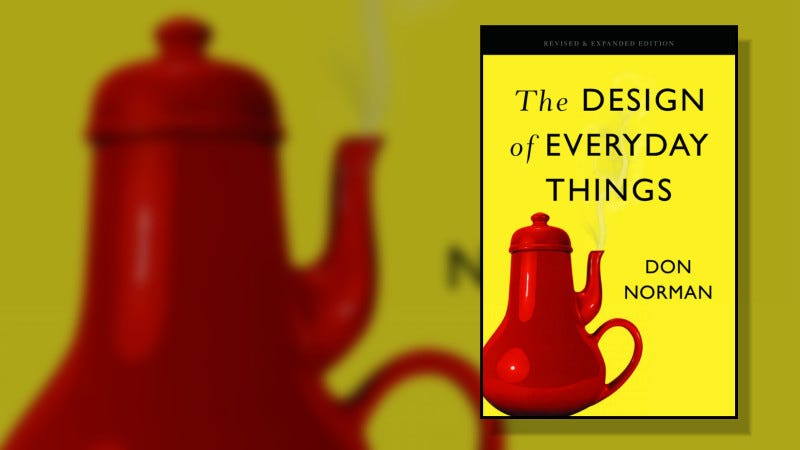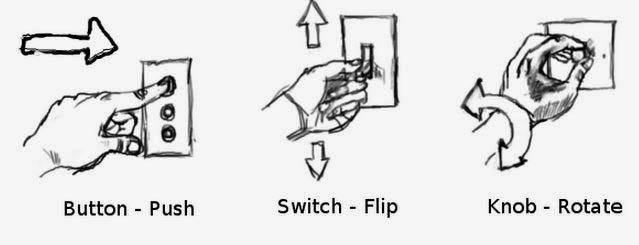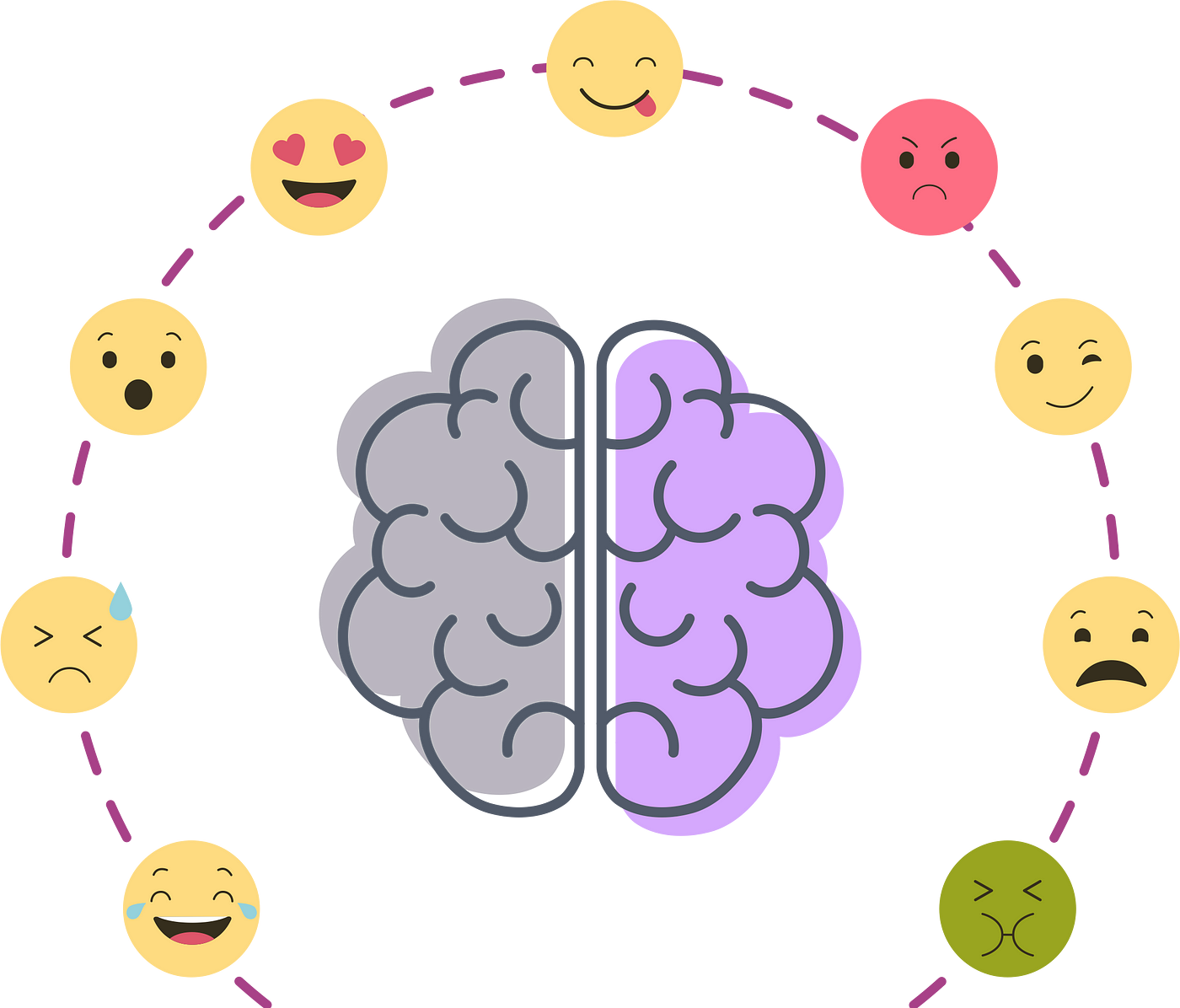Reading: the Design of Everyday Things, Chapters 1 and 2
The Design of Everyday Things past Don Norman: chapters 1–two summary

In the first chapter, The Psychopathology of Everyday Things, Don Norman defines several key concepts that include discoverability, understanding, interaction pattern, experience design, human-centered design, and interaction design principles.
Norman start distinguishes that proficient design must include discoverability and agreement. Discoverability is the ability to recognize what actions can exist taken on a given system. For instance, if a user visits Amazon.com, they tin decide all they can do on the site. Understanding is the understanding of what the product can do. Therefore, if someone who never visited Amazon.com before could they perceive that it is a shopping website? Testing the engineering science for these two principles is critical for the success of product design.
Next, Norman makes a distinction between interaction pattern and experience design. Interaction design is most concerned with how humans collaborate with technology. How displays imply action, and response to those actions is of importance. Interaction borrows from psychology and emotions to create engaging experiences. Whereas experience design focuses on the overall quality of the experiences of products, services, and processes.
Some other important principle that Norman outline in his outset chapter is human being-centered design. This is the underlying framework for whatsoever interaction and experience blueprint. At its cadre, man needs, behaviors, and motivations are the guide to design. Through ascertainment, skillful blueprint meets homo needs. Defining these needs, nonetheless, can be the near challenging part of the job equally people are sometimes unaware of the difficulties they face.

The near noteworthy part of the chapter is the introduction to the principles of interaction pattern: affordances, signifiers, mapping, feedback, and conceptual models. Affordances, the near difficult and misused concept that Norman introduces to the globe of design, is the relationship between the backdrop of an object and the capabilities of a person to understand how the object should work. For example, a doorknob affords the power to turn and open a door. Signifiers are descriptors that explain what activity can be taken on an object. For instance, the words "click hither" on a user interface button, communicates to the user that the push button is actionable. Mapping relates to the relationship between two sets of objects. For instance, on most cars today 1 can adjust the seat by pushing a prepare of push button and good mapping have ii buttons (that look like a car seat when viewed together), one vertical for back adjustment and one horizontal for the seat adjustment. Feedback is the response given by an activity taken on a system and to be effective it must be firsthand. For instance, receiving a message on the screen confirming that your email was sent. A conceptual model is a useful and unproblematic explanation of how something works. The all-time example is the file organization that is found on personal computers. Information technology visually explains that is an arrangement organisation to store documents. This understanding comes from people's "mental model" of how a filling system works.
The following affiliate, The Psychology of Everyday Deportment, focuses on the seven stages of action, cognition, and emotion.

Norman starts the chapter by describing how good design needs to bridge the gap between the gulf of execution and evaluation. The gulf of execution is where people try to figure how a organisation should work and the gulf of evaluation is where people try to understand what happened in that interaction. The gap is bridged past the implementation of the principle of interaction blueprint outlined in chapter 1.
This leads people to organize their goals and examine what actions can be taken to achieve these goals. In the pursuit of their goals, people will program, specify, and perform their actions. Later which, they will evaluate these actions in three steps: perceiving, interpreting, and comparing. This is what Norman calls the vii stages of activity. Many of these steps happen subconsciously and only if there is a disruption to normal activity that conscious attention is given. Furthermore, past doing a root cause assay and asking "why" designers tin understand people's ultimate goals.
Norman likewise explains that noesis and emotion are linked together in this chapter, as cognition gives united states understanding and emotion-value-judgment. There are three levels of processing working together: visceral, behavior, and reflective. The visceral level is the place where humans make quick judgments allowing them to respond chop-chop and subconsciously. The behavior level is where our learned skills be and at this level, we are aware of our actions, merely not the details. The reflective level is where reasoning and conscious decision-making takes place and where the highest levels of emotion come up from.

The 7 stages of activity are highly influenced by the iii levels of processing, and information technology is when people achieve a state of "flow" (described by Mihaly Csikszentmihalyi) that they are fully immersed in an activeness and lose runway of time and their environment. For "flow" to exist achieved, the activeness cannot be likewise hard nor too easy.
The final section of the chapter, Norman, describes how humans assign cocky-blame when a failure occurs and develop a sense of helplessness. Furthermore, he advises designers on how to help people experience positive and have success with technology. For case, Norman suggests that designers give guidance and information to users instead of mistake messages, and when feedback is given allow the users to act from that very point in the experience. He closes the chapter by arguing that human error is actually system error. Therefore, designers should consider what happens when things become incorrect, and help steer users dorsum to safety.
Source: https://bootcamp.uxdesign.cc/the-design-of-everyday-things-by-don-norman-chapters-1-2-summary-dd683481f49f
0 Response to "Reading: the Design of Everyday Things, Chapters 1 and 2"
Post a Comment